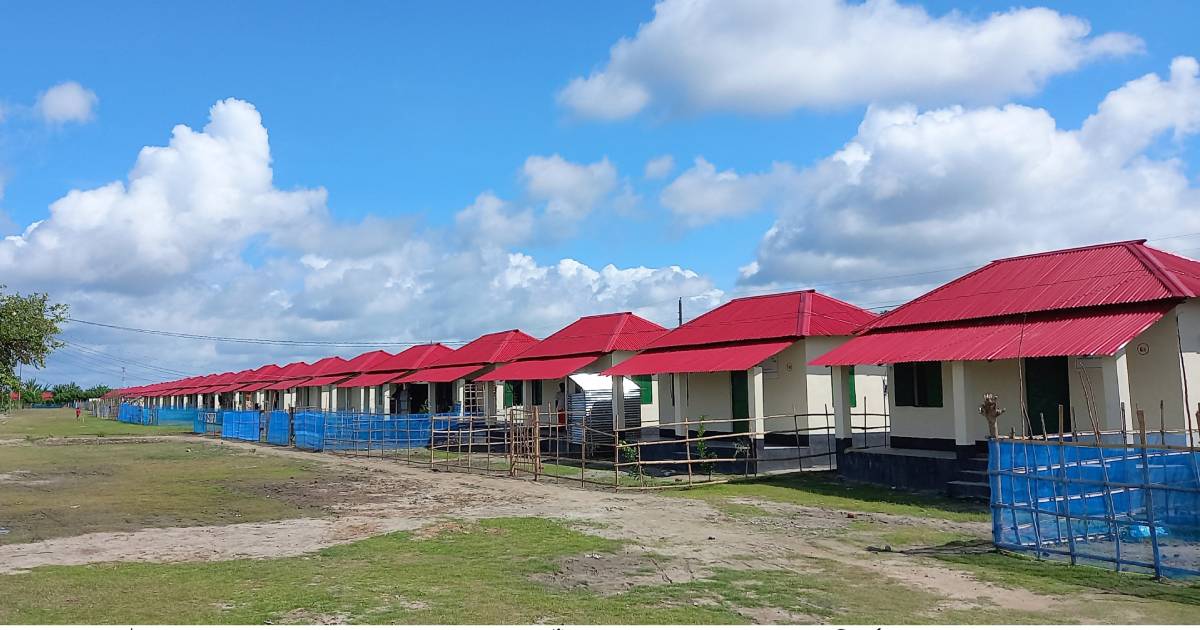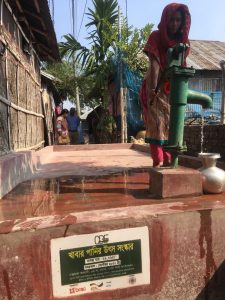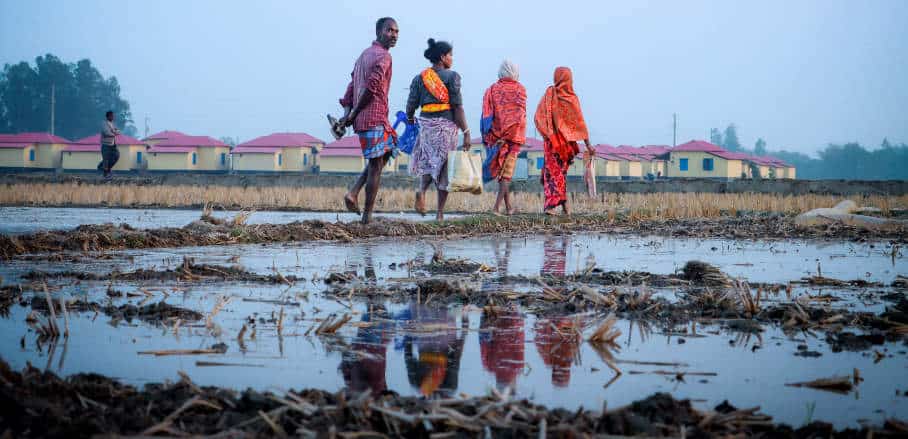Climate-induced Displacement: Loss and Damage in Bangladesh
As climate change exacerbates displacement and loss in Bangladesh, Saleemul Huq and Lutfor Rahman call for a collaborative global effort to address loss and damage funding. The upcoming COP28 in Dubai may be a game changer.
The world has entered a new era of climate change reality. It is not a theoretical concept or a distant future possibility anymore, but a present and observable phenomenon with real and tangible impacts on our planet’s climate system, ecosystems, and human societies.
As a result, human communities and the environment encounter both economic and non-economic consequences of climate change – such as cyclones, floods, droughts, heatwaves, and sea-level rise – called loss and damage (LnD). Economic loss and damage include loss of land and homes as well as damage to crops and infrastructure. Non-economic loss and damage include human mobility or displacement, the loss of family, harm to human health, social ties, and cultural heritage, as well as loss of biodiversity and habitats.
Unstoppable Internal Protracted Displacement
Bangladesh is the 7th extreme risk disaster-prone country in the world as per the Global Climate Risk Index 2021 report. According to a World Bank report, 216 million people could be displaced or become climate migrants across its six regions by 2050, with Bangladesh facing up to 19.9 million displacements in South Asia alone. Climate change worsens hardships on coastlines, northern regions, and riverbanks. They are especially vulnerable to cyclones, salinity intrusion, droughts, floods, and riverbank erosion, which often lead to displacement in the affected areas. According to the World Health Organisation (WHO), over 7.1 million Bangladeshis were displaced by climate change in 2022.

People are living with fear, because any time they could be displaced due to erosion or cyclones in the floating village of Kalabagi, Khulna, in Bangladesh. © Lutfor Rahman
Many people in Bangladesh are losing their homes and livelihoods because of the climate crisis. It is causing an unstoppable internal protracted displacement to big cities, including Dhaka, Chattagram, Khulna and Rajshahi. In 2014, the slum census reported that over 2.2 million people resided in urban slum areas throughout the country. However, Dhaka alone recently hosts a staggering 10 million displaced individuals, with an additional 2,000 people joining the city daily.
Supporting Climate Migrants and Local-Level Climate Change Adaptation
However, both government and non-governmental organisations (NGOs) are actively addressing the challenges of displacement induced by climate change. Their efforts aim to alleviate the hardships related to housing, water, sanitation, livelihoods, health, and the diversification of financial resources while supporting local-level climate change adaptation.
In addition, Bangladesh’s government implemented four main strategies to respond to climate-induced displacement. Initially, Bangladesh relocated displaced individuals to cluster villages on public lands. Through the government’s Ashrayan project, a groundbreaking initiative for the displaced, landless and homeless, more than 0.4 million families have been provided with homes. Moreover, Bangladesh has launched the world’s largest housing project for 4,409 climate refugee families with its residents undergoing life skills training encompassing leadership, disaster preparedness, and income generation.
The third approach involved integrating resettlement initiatives with local-level climate change adaptation and poverty reduction activities, fostering collaboration between the central government, its seventeen departments, and local councils under the social safety programme. The fourth approach aimed to enhance financial resources by securing additional donor funds and establishing an independent financial mechanism.

A cluster village established within the Ashrayan project in Rampal, Khulna, Bangladesh © UNV Bagerhat
In Bangladesh, people have been experiencing LnD for decades. They migrated from the climate change hotspots toward mega or secondary city slum areas. Many NGOs have been involved in slum development activities since the late 1980s. During the 1990s, their numbers increased in health, water, sanitation, and credit in Dhaka’s slum areas. In 2019, the Conference of Parties (COP25) announced that all its development programmes will adapt to minimising climate risk in Bangladesh.
Climate Bridge Fund to Enhance Livelihoods and Resilience
As a result, many international and national NGOs align their programme with reducing climate change’s negative impact, especially for marginalised people. As most people migrating from rural to urban slum areas experience adverse effects of climate change, it is called non-economic loss and damage (NELD). These unplanned migrations within the urban areas are putting massive pressure on these cities’ resources. In slum areas, residents experience restricted access to essential services, incurring higher costs, yet they perceive this as a safer alternative to returning to climate hotspot areas.
In 2019, the Climate Bridge Fund (CBF) was established in collaboration with the Bangladesh Rural Advancement Committee (BRAC) – a Bangladesh-based international NGO backed by the government of Germany – to mitigate such consequences. By establishing the fund, BRAC aims to provide a long-term facility to support adaptation in the context of climate-induced migration. The CBF is expected to enhance climate migrants’ sustainable livelihoods and their resilience to climate-related risks that may trigger further climate-induced migration. It is also designed to channel donors’ finances to people in climate-vulnerable locations, particularly urban informal settlements.

Deep tube-well for drinking water in a slum in Khulna, Bangladesh © BRAC CBF team
The CBF uses a bottom-up approach, fostering locally designed interventions by people, organised groups, and local authorities, which are later implemented with the help of local NGOs working in respective locations. This initiative represents one of the earliest efforts exclusively focused on those displaced or at risk of displacement due to climate change.
Loss and Damage Funding Needed
However, there is still a long way to go to put the promised actions into words. Bangladesh is not sitting idle in dealing with climate change, economic or non-economic loss and damage. Bangladesh’s government and NGOs have become role models with the constraints of financial resources to reduce the suffering of the most vulnerable. Throughout history, the country has been confronted with the reality of climate change. We must help ourselves if no one is coming out to help us. The rest of the world realises that developing countries are not responsible for climate change, but they have to pay for it the most.
We need to scale up the approaches and practices to minimise the impact of climate change and save our only liveable planet. Developing nations are facing substantial internal displacement, which is why we need a collaborative consortium to pursue loss and damage funding. This funding could focus on structural efforts, like improving infrastructure and public services, and non-structural initiatives, including skill enhancement, vocational training, and easy access to finance. The upcoming COP28 in Dubai might bring some good news in this regard.
